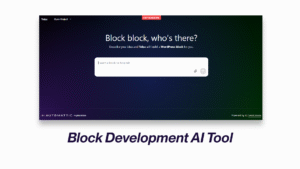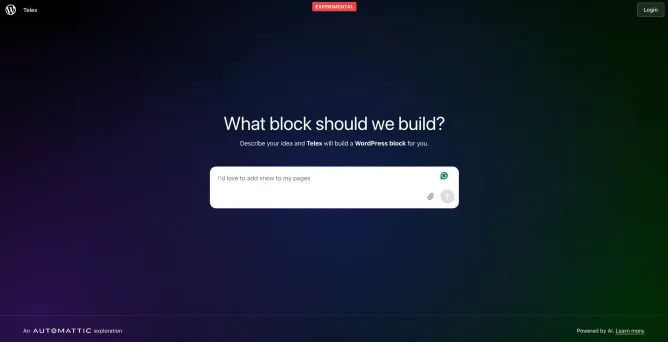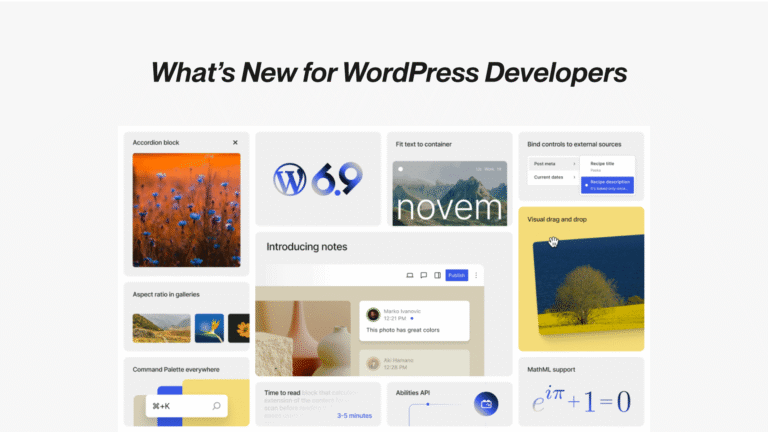A Platform for
Modern
WordPress Developers

Automattic Launches Telex AI at WCUS 2025
In this article find about the Automattic's newly released experimental tool called Telex AI that generates WordPress blocks from a plain language prompt
What Telex AI Does and why it matters for WordPress developers
Automattic has introduced an experimental tool called Telex AI that generates WordPress blocks from a plain language prompt.
First shown at WordCamp US 2025, Telex turns simple descriptions of a user interface into a block editor prototype. Describe the UI you want and Telex scaffolds the block code so you can drop it into a page, refine it, or use it as a starting point for production work.
Telex aims to shorten the gap between concept and implementation. Instead of hand writing HTML and JavaScript, you describe the block you need and Telex returns a usable block prototype.
Early users have produced buttons, call to action sections, and small interactive components with just a couple of prompts. The output is a starting point for a developer to inspect, edit, and integrate. Community reaction has been a mix of curiosity and cautious excitement.
Why Telex AI could change block development
WordPress development is changing in two ways at once. The block editor is now the default editing surface and artificial intelligence is being used to speed up repetitive tasks. Telex sits at the intersection of these two trends. For freelancers and small agencies it can speed prototyping and client approvals.
For plugin and theme authors it provides a quick way to mock up ideas that would otherwise require boilerplate work. Generating block scaffolding in minutes reduces context switching and shortens iteration cycles.
Five things WordPress developers need to know now

Telex is experimental and availability is limited
Automattic describes Telex as an experiment. The initial rollout is aimed at gathering feedback and the experience is primarily desktop focused for now. Treat Telex as a prototyping tool for better productivity rather than a production ready code generator. Expect frequent updates while the team collects real world usage notes.
The output is useful but requires human review
Telex can produce functional block code but it rarely arrives ship ready. Developers must review accessibility, security, and performance before shipping anything created by the tool. Telex removes tedious scaffolding work but meaningful design and engineering decisions remain with humans.
Telex speeds prototyping and client demos
For rapid mockups Telex is valuable. Instead of spending an hour wiring a demo block you can ask Telex for the component and iterate on wording or layout. That saves time when pitching designs or validating ideas and produces code you can use as a starting point in a component library.
Watch for quality, compatibility and maintenance costs
Automatically generated code can hide dependencies or use patterns that do not fit your project standards. Expect to invest developer time in refactoring and testing. If you adopt Telex outputs into production plan for long term maintenance and integrate the generated blocks into your testing and release pipeline.
Privacy and intellectual property issues remain
When AI generates code from prompts there are two practical concerns. First, provenance of the generated code matters for licensing and compliance.
Second, any data you paste into a prompt may be processed by external services. Because Telex is experimental clarify how prompts and outputs are handled before sending proprietary designs or client data to the tool.
Pros of Telex AI
- Faster prototyping and iteration. Telex reduces the time from idea to working code so teams can test more variations quickly.
- Lower barrier to entry for designers. Non developers can sketch block ideas and hand a working starting point to an engineer.
- Encourages experimentation. The lower cost of producing prototypes encourages more creative designs and faster validation.
Cons of Telex AI
- Generated code is not guaranteed production ready. Accessibility, security and optimization need human attention.
- Potential for inconsistent code quality. Output may vary depending on prompts and the underlying model.
- Unclear long term licensing and privacy commitments. The experiment could change, be limited, or be folded into paid products later.
Is Telex AI free ?
Automattic positioned Telex as an experimental experience and the initial availability appears to be a free preview for early users. Because the project is an experiment Automattic may change access, integrate the capability in other products, or introduce tiers later. For now developers can explore Telex without cost but should not assume long term free access.
How to approach Telex in your workflow
Use Telex for mockups and quick proofs of concept. Treat generated blocks as a boilerplate. Add a mandatory review step for accessibility and security. Keep a record of what you generated and how you adapted it so you can maintain the code responsibly. If you manage client sites disclose the use of AI generated code and include a short acceptance test before any code goes live.
Final takeaway
Telex is a practical experiment that brings natural language to block creation. It will not replace skilled developers but it can make the early parts of building faster and less repetitive.
For WordPress teams looking to accelerate prototyping it is worth trying. For production work maintain the same standards and checks you always use. Expect Telex to evolve and to be integrated into broader offerings as Automattic refines the experience.


